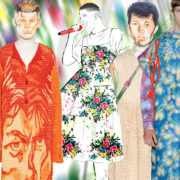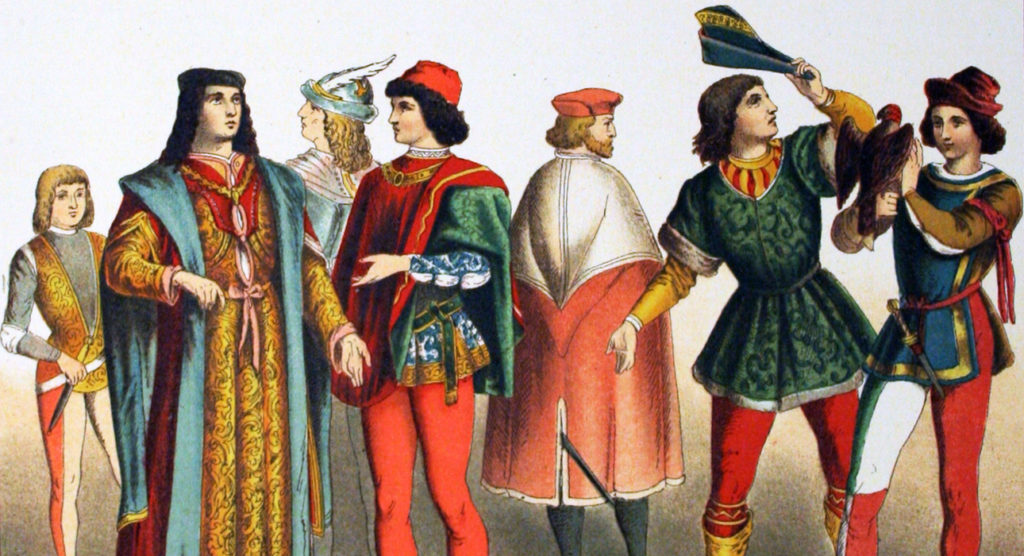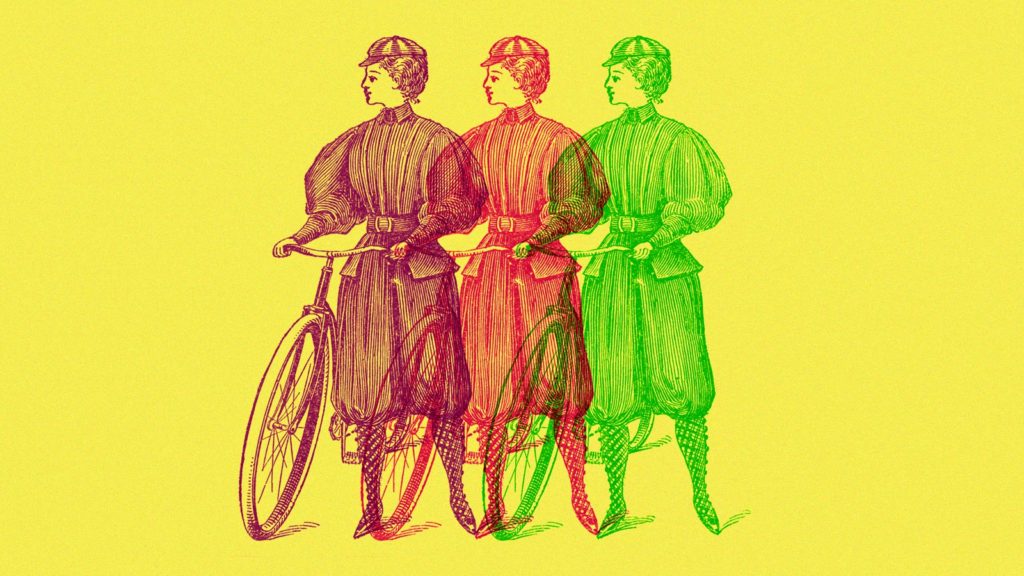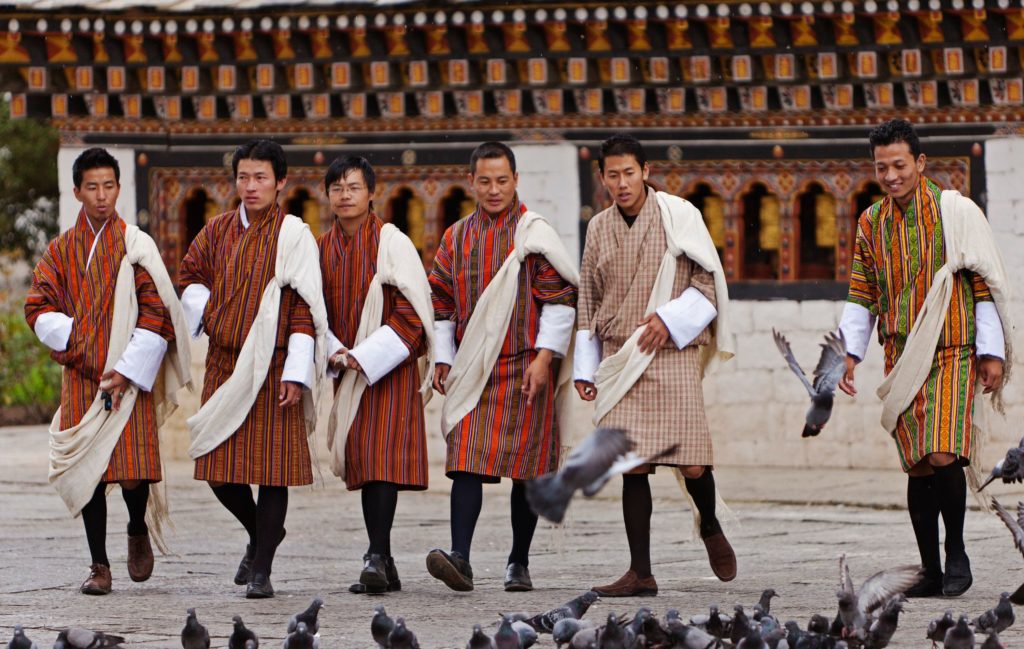Fashion wasn’t always about gender: a history of men in dresses

In December 2020, Harry Styles appeared on the cover of US Vogue. He was the first male in 127 years to feature on the cover and he did so wearing a dress. Unsurprisingly, it sparked a wave of criticism. This occurrence, alongside some beautifully dressed males at the Met Gala, brought the conversation of ‘feminine’ male attire into the western mainstream.
The question: should boys be allowed to wear skirts just as women can wear trousers? The answer: why do we need to gender clothes?
The idea of gendered clothing is much newer than people think. All too often, in the western world, it’s forgotten that what we consider typically male or female is a mere social construct that’s been shaped by years of history and evolving fashion trends. The history of men adorning ‘feminine’ clothing goes back much further than Kurt Cobain sulking around in a floral dress or David Bowie strutting in awe inspiring gowns – the entire idea of skirted garments as specifically female attire is a modern concept.
Skirts and dresses were everyday attire for most of humanity’s ancient civilizations, regardless of gender. Egyptians wore schenti which were simple wrap around skirts, belted at the waist and sometimes pleated or gathered in the front. Elite society saw Greeks wearing chitons and Romans sporting togas, while the basic garment for both genders and all classes was the tunica. For these people, trousers were considered ridiculous, impractical and, when Romans first encountered Gauls who did wear trousers, even ‘effeminate’.
Skirts were the go to choice whether you were fighting, building, farming or engaging in religious ritual. Aztecs based their ornate military costumes around the idea of the skirt mostly because they were easy to construct and allowed freedom of movement. Among Roman soldiers, short skirts in particular were considered to be proof of virility as well as allowing for swiftness while in combat.
So why move away from the garment? Perhaps a rather boring end: it was cold and riding a horse was hard in a skirt. The development of trousers can be closely tied to the introduction of animals that required riding; from samurai riding costumes in Japan to the nomadic herders of Mongolia, horses and riding meant trousers. Many societies were gender-divided as to who rode the horses, so it’s natural that trousers slowly developed to be a “masculine” necessity. But, as most of us no longer ride horses on the daily, it’s scarcely applicable as a modern argument.

Until the 14th century, both men and women continued to wear very similar attire. Accentuating your curves was not a thing, at all, and both genders adorned draped or unshaped garments and tunics to cover their unspeakables. Clothing was simply a necessity, the garments needed to be practical and, without much development in tailoring, the fashions didn’t need to change.
But in the 14th century, technology began to develop and so did tailoring. Now we had underwear! Well, men did. While women, and the less fashionable men, continued dressing in long tunics, male attire was dominated by short hemlines paired with stockings worn as outer leg wear. Showing off those shapley legs was all the rage and the more leg you could show, the better. This shorter style inevitably led to something having to be added to ensure that *clears throat* nothing fell out. Hence, underwear or ‘hose’.
Hose mirrored the style of modern day trousers, but in medieval times, going out in just hose was unacceptable – the garment had to be paired under a short skirt or tunic – think a medieval version of the 2000’s skirt over jeans vibes. Even when the tunic overlay fell out of fashion, trousers were designed to swell to skirt-like proportions among the fashionable, in keeping with the essence of the style.
Despite hose, long gowns and full-skirted coats remained acceptable and fashionable parts of the male wardrobe until the first half of the 20th century, though their mainstream popularity declined rapidly in the 1800’s.
The marking of trousers-for-men and skirts-for-women wasn’t completely set in stone until about the 19th century. Even at this time, as the skin tight breeches (resembling, ironically, horse riding trousers) accentuated everything of a gentleman’s bottom half, walking past a man in a skirt or dress wouldn’t have warranted a second glance in many contexts of European society. In fact, many instances of skirted male garments never died out – academics, monks and men of leisure wore gowns and still do today.

We can blame the 19th century trend, ‘breeching’, for the birth of gendered clothing. Breeching meant giving your son, when between the age of 4 and 7, their first pair of trousers (breeches) to show off to society that they’d gone beyond infancy and were now mature. It was super fashionable to do this and was seen as a ‘rite of passage’ in the life of a boy, often being celebrated with a small party. Somewhat sadly, breeching also marked the point of the young boy’s life when his father would actually become involved in raising him.
In understanding the breeching practice, it’s unsuprising that the 19th century saw changes in ‘what it means to be a man’. Toxic masculinity butted it’s head and, maybe thanks to the removal of positive male influences in many lives until they were allowed to wear trousers, assigning gender and traits to fashion choices gained popularity.
In western society, gendered clothing became the norm and it pretty much stayed that way with neither gender daring to step out too far out of their assigned box. Underground within the safety of like-minded people, fashionistas thrived and experimented happily with clothing, gender and the social constructs placed on them. While celebrity outfits and runway are collections are full of gender non-conforming pieces nowadays, on the streets in daily life, the fear of backlash has prevented much of our fashion stepping out the applied gender-norms.
Men in skirts have received mainstream resistance with critics citing the idea that, since the skirt is inherently feminine, a man wearing one is feminine and therefore weakened. Not only is this argument incredibly sexist, but it’s based in no fact whatsoever while also going against everything civilisations once thought about skirts and dresses as male attire.

The idea that skirts are entirely feminine is, not only historically inaccurate, but very western-centric. In many cultures, particularly from India to Japan and Southeast Asia, robes and skirts are completely acceptable wear for adult men. It’s incredibly important to bring this aspect into the conversation as we label western celebrities wearing skirts ‘avant-garde’ and ‘iconic’ while ignoring that it was white, western culture that eradicated free-gendered clothing for many. We must understand that our western ideas about skirts and dresses are tied to our specific culture and don’t apply to every nation across the globe.
The fact of the matter is clothing doesn’t have a gender, nothing has a gender. Because gender is a social construct. Throughout history men were not choosing to dress in feminine attire, they were dressing in gender-neutral clothing because there was no other clothing – because clothing didn’t, and still doesn’t, have a gender.
Today, we still question men’s masculinity based solely on their appearance – whether we mean to or not. Thankfully, the past few years have seen a huge rise in popularity of gender-neutral fashion and the harmful stereotypes and prejudices about how people should dress are being deconstructed.
Fashion is not about gender, it’s about expression and personality.
Discover more from GUAP’s Fashion section here




![ZINO VINCI’S ‘FILTHY & DISGUSTING’EP BRINGS YOU TO THE CORE OF THE ARTIST [@ZinoVinci]](https://guap.co/wp-content/uploads/2023/10/Zino-4.jpg)



